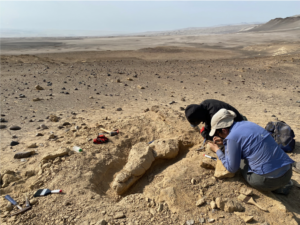This paper focuses on the representation of the air surface temperature and precipitation using high spatiotemporal simulations (3 km–1 h) of the WRF3.7.1 model in the central Peruvian area. It covers, from east to west, the coastal zone, the western slope of the Andes, the Andean Mantaro basin (500–5000 masl), and the Andes-Amazon transition region in the eastern Andes. The study covers the January months from 2004 to 2008. Three experiments were conducted using different topography and land use data sources: (1) a control simulation using the default WRF topography and land use datasets from the United States Geological Survey (USGS); (2) a simulation changing only the topography by using the SRTM topography dataset; and (3) a simulation changing the land use data of (2) by a new dataset adapted from Eva et al. (2004). SRTM topography performed better than the control simulation for representing the actual altitudes of 57 meteorological stations that were used for precipitation and surface air temperature data. As a result, the simulations of experiments (2) and (3) produced lower bias values than that of (1). Topography change (experiment (2)) showed improvements in temperature bias that were directly associated with linear modifications of -5.6 and -6.7 °C∙km−1 in minimum and maximum temperature, respectively. Increasing (decreasing) precipitation with topography or land use change was clearly controlled by changes in the moisture flux patterns and its convergence (divergence) in the Andes-Amazon transition. On the western slope, precipitation increase could be associated with the increase in easterly flow by the smaller altitudes of the Andes mountains in SRTM topography and by increasing evaporation with new land use. Inside the Mantaro Basin, low level moisture flux seems to control the rainfall changes. Overall, relative changes (positive or negative) in precipitation due to topography or land use change could reach values above 25%.



